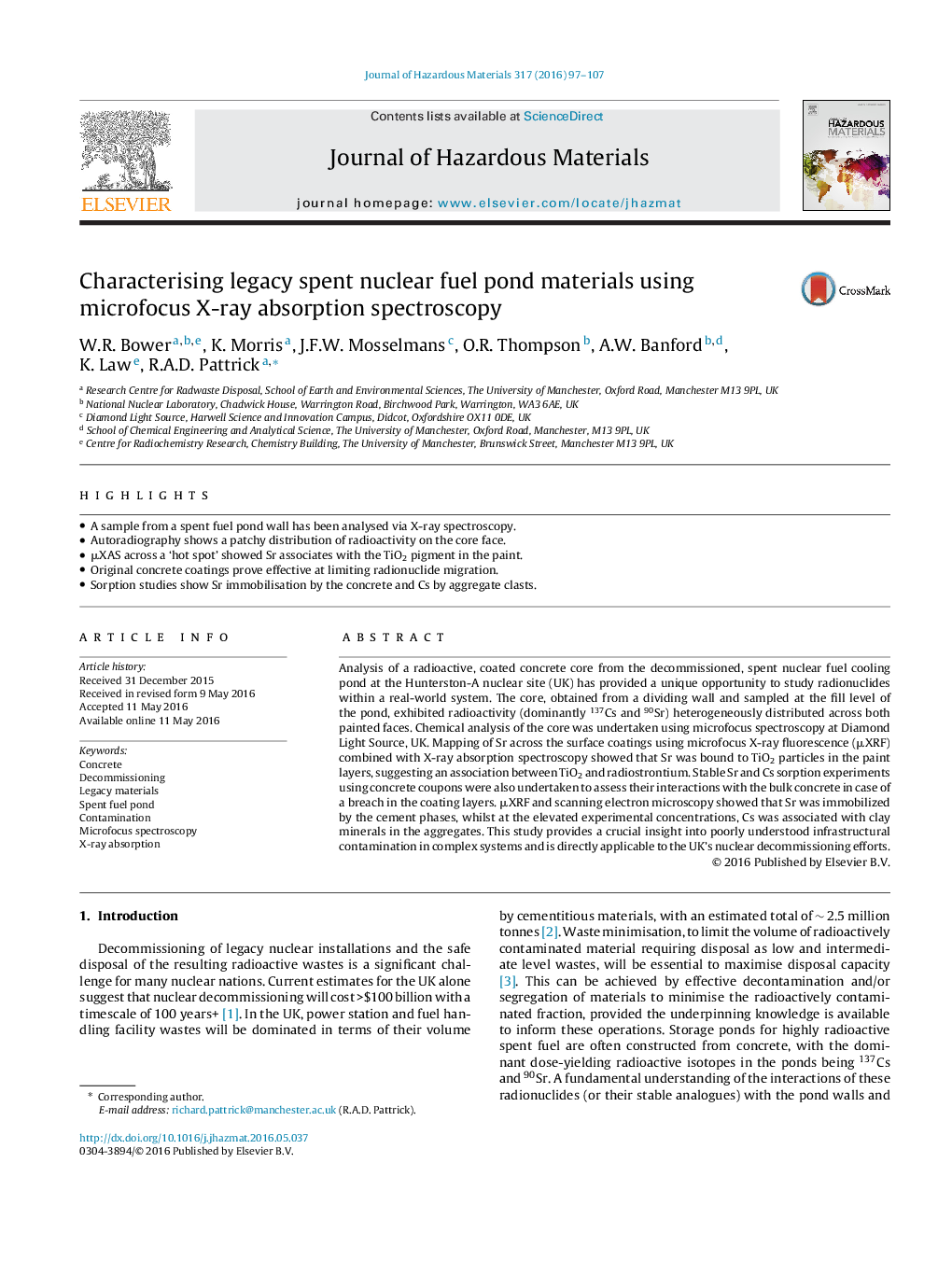| Article ID | Journal | Published Year | Pages | File Type |
|---|---|---|---|---|
| 6969983 | Journal of Hazardous Materials | 2016 | 11 Pages |
Abstract
Analysis of a radioactive, coated concrete core from the decommissioned, spent nuclear fuel cooling pond at the Hunterston-A nuclear site (UK) has provided a unique opportunity to study radionuclides within a real-world system. The core, obtained from a dividing wall and sampled at the fill level of the pond, exhibited radioactivity (dominantly 137Cs and 90Sr) heterogeneously distributed across both painted faces. Chemical analysis of the core was undertaken using microfocus spectroscopy at Diamond Light Source, UK. Mapping of Sr across the surface coatings using microfocus X-ray fluorescence (μXRF) combined with X-ray absorption spectroscopy showed that Sr was bound to TiO2 particles in the paint layers, suggesting an association between TiO2 and radiostrontium. Stable Sr and Cs sorption experiments using concrete coupons were also undertaken to assess their interactions with the bulk concrete in case of a breach in the coating layers. μXRF and scanning electron microscopy showed that Sr was immobilized by the cement phases, whilst at the elevated experimental concentrations, Cs was associated with clay minerals in the aggregates. This study provides a crucial insight into poorly understood infrastructural contamination in complex systems and is directly applicable to the UK's nuclear decommissioning efforts.
Related Topics
Physical Sciences and Engineering
Chemical Engineering
Chemical Health and Safety
Authors
W.R. Bower, K. Morris, J.F.W. Mosselmans, O.R. Thompson, A.W. Banford, K. Law, R.A.D. Pattrick,
